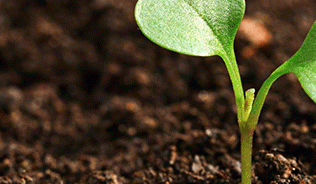Rachel Carson’s Silent Spring is widely attributed to have kickstarted modern environmentalism. With DDT as her poster poison, Rachel Carson aimed to investigate and lay bare to the general public the serious environmental harm of the indiscriminate and uncontrolled use of pesticides. However, Silent Spring went far beyond its initial premise, it sparked a new public consciousness for environmentalism, and was to the environmental movement what Uncle Tom’s Cabin was to the abolition of slavery. Certainly, through her strong scientific background and literary skill, Carson was able to engender momentous public support in spite of scathing attacks by the chemical industry, who claimed her “hysterical” and her science emotionally driven and anecdotal. Crucially, following Silent Spring’s publication, the ensuing whirlwind of controversy transformed the issue of pesticide use into a matter of national concern. President John Kennedy famously directed the Presidents Science Advisory Committee (PSAC) to investigate the ecological impacts of DDT. In doing so he and the US Government essentially vindicated Carson’s work and set in motion a paradigm shift in the American environmental movement, from aesthetic to regulatory-based environmentalism.
Now common sense, the conclusions of the Kennedy PSAC report were then considered revolutionary; that “precisely because pesticide chemicals are designed to kill or metabolically upset some living organism, they are potentially dangerous to other living organisms”. The PSAC recommended immediate and strict regulation of pesticides. DDT was eventually banned in the USA in 1972; an achievement that spanned three presidencies and 10 years. Possibly more critical, were the environmental issues that became caught up in the slipstream of pesticide regulation and the polices and agencies enacted or set up as a consequence.
Although the consequences of Silent Spring have largely been considered a success story, many of the concerns that Carson raised in 1962 have persisted into the future. Environmental catastrophes and controversies have occurred many times since Silent Spring’s publication. In 1995, thousands of Swainson’s hawks died in Argentina, from ingesting grasshoppers sprayed with monocrotophos, another organophosphate. Since 1960, egg shell thinning, a well-recognised symptom of pesticide exposure, has been identified in many bird species including brown pelicans, American kestrels and white faced ibis.
Despite the continued appearance of pesticide-related catastrophes since Silent Spring, and the public and Governmental support Carson received during and after its release, it is surprising that today there is a considerable and often vicious negative opinion of her. The banning of DDT in the USA has been credited as perpetuating the spread and negative impacts of mosquito-borne malaria. For many, Carson is responsible for the “worst crime of the century”, touted as “the second Hitler” or “a mass murderer”. Less inflammatory remarks remark that Carson’s work promoted a view that “environmental controls were more important than the lives of human beings”, and that “Silent Spring is now killing African children because of its persistence in the public mind”. These are all comments made since the turn of the new millennium.
Silent Spring was undoubtedly crucial to the fundamental principles of modern environmentalism and caused the US public and government to recognise and react to the impacts of pesticides specifically, but also other major environmental problems as well. Silent Spring, published 50 years ago, remains fundamental to environmental thought and policy worldwide. Perhaps contemporary society – beset by both persistent and new environmental challenges – needs a new generation of science communicators in the mould of Rachel Carson.
To commemorate the ground-breaking developments in pesticide regulation and toxicology that were spear-headed by Rachel Carson, the IES and the Royal Society of Chemistry have organised a meeting to discuss the scientific legacy of Rachel Carson. Click here for more information on the event and how to book your place.


